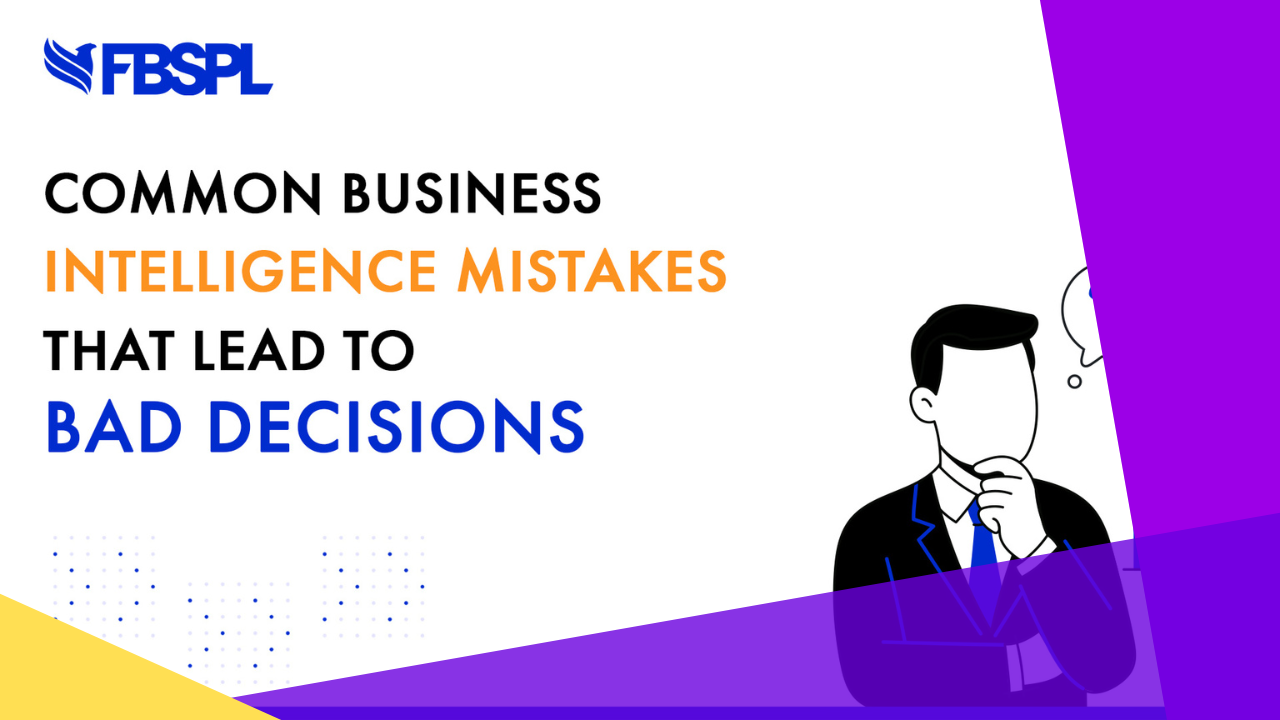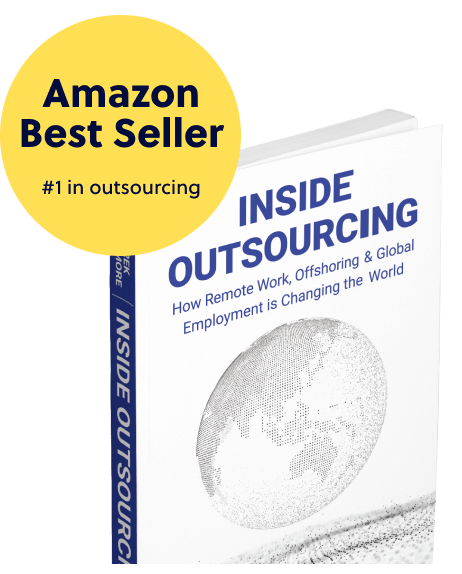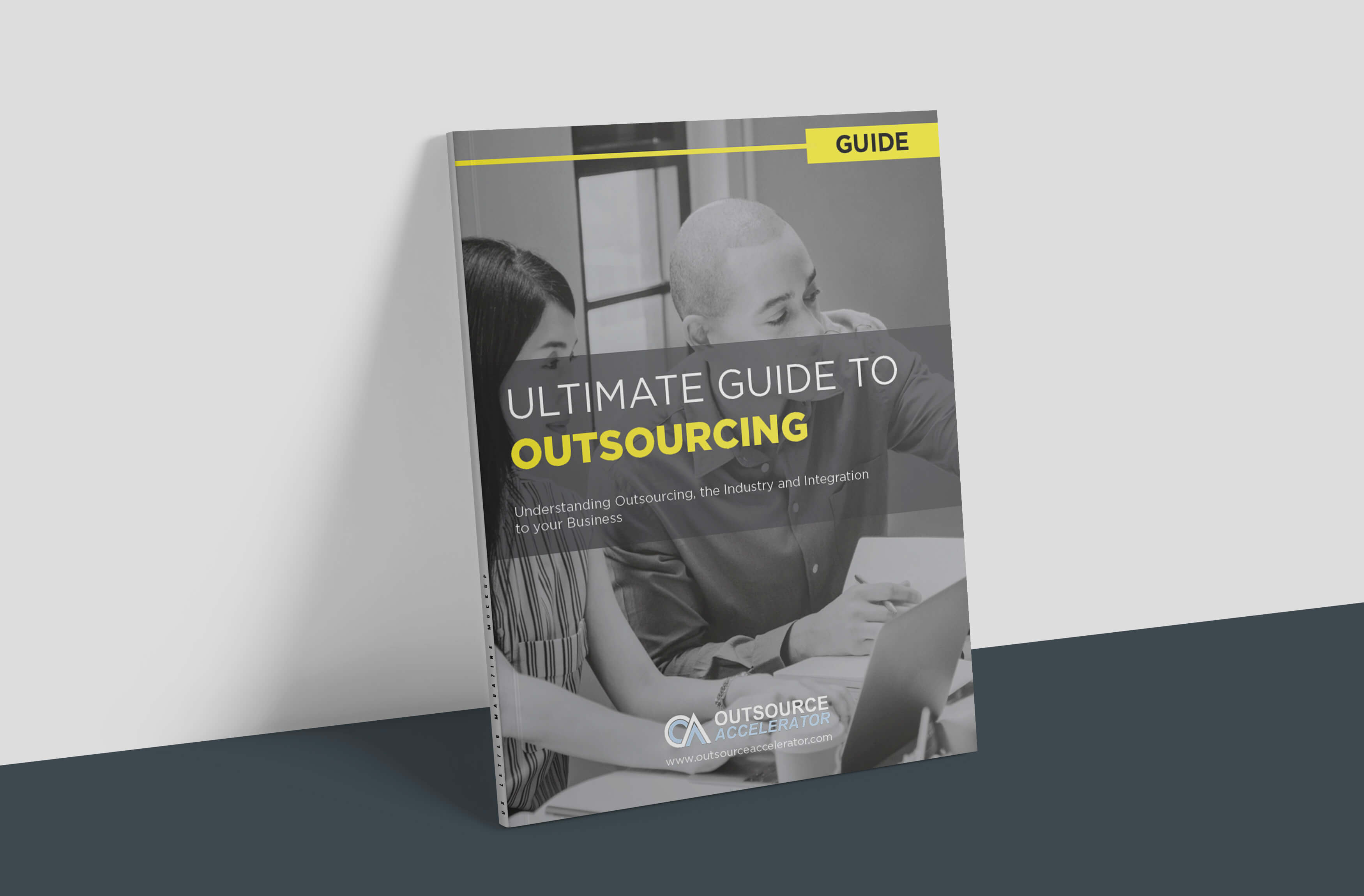Common business intelligence mistakes that lead to bad decisions

This article is a submission by Fusion Business Solution (P) Ltd.-FBSPL. Fusion Business Solution (P) Ltd. (FBSPL) is a Udaipur, India-based company providing Business Process Outsourcing, management, consulting, and IT services, with operations in New York, USA.
The fine line between insight and error
Data is everywhere. Every click, every sale, every conversation with a customer leaves a trace. Businesses know this, which is why so many of them invest in Business Intelligence (BI) to turn all that raw information into something usable.
Done right, BI is powerful; it can change the way a company makes decisions. Done wrong, it can lead to one of the most expensive mistakes a business can make: making a “data-driven” decision based on bad or incomplete insight.
And that happens more often than most leaders realize. Poorly planned dashboards, rushed rollouts, or misunderstood numbers have pushed plenty of teams off course.
The frustrating part? These business intelligence mistakes are preventable. Companies that take time to plan, train, and, when needed, bring in expert support through business intelligence services or even business intelligence outsourcing solutions avoid most of the common pitfalls.
In this post, let’s break down the usual traps, the benefits BI actually delivers, and how to keep your next business intelligence project from derailing.
When data overwhelms: Key business intelligence challenges
One of the sneaky problems with BI is not a lack of data but having too much. Many leaders describe it as drinking from a firehose: dashboards everywhere, dozens of metrics, and no clear picture.
That’s one of the classic business intelligence challenges. A few more that surface again and again include:
Siloed information. When marketing, finance, and operations all guard their own numbers, nobody trusts the bigger picture.
Messy data. Reports become unreliable due to outdated, duplicate, or missing fields. Simply put, garbage in, garbage out.
Resistance to change. People who have spent years working in Excel or waiting on IT reports rarely welcome a new BI system.
Unclear goals. Too often, companies buy a flashy tool without asking the simple question: What problem are we solving?
What’s interesting is that these aren’t purely tech issues; they’re cultural. Teams that put energy into better data management and reporting frameworks usually find BI adoption much smoother.

The real upside: Business intelligence benefits
Despite these challenges, the upside can be large. Companies that do BI the right way see significant returns, including:
Faster, cleaner decisions. Instead of waiting weeks for a finance report, a leader can see sales trends instantly.
Efficiency gains. A bottleneck in shipping or procurement becomes obvious on a dashboard instead of months later.
Sharper customer insights. You can finally spot who buys what, when, and why.
Staying ahead of competitors. If you are the first to identify a shift in demand, you won’t merely be chasing your competitors; you’ll either own the market or be lagging behind.
Of course, there’s a balance. The business intelligence benefits and challenges are two sides of the same coin. But the benefits are worth the effort.
Just look at how widespread it’s become; business intelligence benefits across industries show up everywhere, from hospitals reducing wait times to retailers stocking smarter.
Where things go wrong: Common implementation mistakes
For every BI success story, there’s a cautionary tale. A company spends months setting up a tool, only to find no one uses it. Or worse, leaders rely on flawed dashboards to make multimillion-dollar calls.
Some of the usual business intelligence implementation mistakes include:
No real strategy. Buying a tool before defining the business question it’s supposed to answer.
Too much complexity. Dashboards packed with dozens of KPIs that no one remembers.
Skipping training. Handing over a tool without teaching teams how to actually use it.
Short-term thinking. Building for this year’s problem, without considering future growth.
Ignoring governance. No rules on who owns the data, who updates it, or how it’s secured.
These mistakes don’t just slow adoption; they create mistrust. Once a team believes the data is “wrong,” it’s incredibly hard to win back their confidence.
Smarter approaches: How to stay clear of pitfalls
So how do successful organizations avoid the same traps? Some practical moves include:
Keep it focused. Start with one or two high-value use cases for your organization, and scale from there.
Introduce stakeholders early. Finance, marketing, operations, etc., all need to feel like a stakeholder.
Clean data first. Fix the input before layering on analytics.
Track ROI. Keep an eye on whether BI is saving time, money, or both.
The point isn’t just to get shiny dashboards. It’s to solve real business problems, and that requires discipline.
Choosing wisely: Business intelligence tools that work
Not all BI tools are created equal. Some look great in demos but collapse when rolled out across a company. The best business intelligence tools usually have a few things in common:
- Usability for non-technical users.
- Integration with CRMs, ERPs, and marketing programs.
- Scalable, so you don’t have to toss it out in 2 years.
- Having some advanced features, like predictive analytics or AI-driven suggestions.
You definitely need tools, but they’re not the magic bullet. Without strategy and culture, even the most sophisticated system becomes shelfware.
Why outsourcing helps more than you’d think
Plenty of companies underestimate the complexity of BI, especially smaller and mid-sized firms. That’s where outsourced business intelligence services really shine.
A strong partner can bring:
Specialized expertise. People who’ve solved BI problems across multiple industries.
Cost efficiency. Far cheaper than hiring and training a full internal team.
Speed. External partners often bring ready-to-go frameworks that accelerate projects.
Flexibility. Scale up or down based on where your business is heading.
Good business intelligence outsourcing enables internal teams to focus on core skillsets while making smarter decisions.

Closing thoughts: Building BI that works for you
The truth about Business Intelligence is simple: it’s powerful yet fragile. One poorly constructed action, such as pulling in bad data or running a dashboard without context, could eliminate months of work.
When done properly, Business Intelligence feels less like a system or interface and rather, a compass; guiding everyday decisions forward.
What is actually important isn’t the interface you choose or how large the dataset is. It’s if people working inside the business actually trust the numbers and are willing to utilize them.
Business Intelligence is deliverable for companies that take a step back, clarify goals, declutter data, and bring the crew along for the ride.
So rather than obsessing over every feature or report type, it is better to focus on the fundamentals, clarity, accuracy, and adoption.
Accomplish that, and Business Intelligence stops being just another technology investment and becomes something much more valuable, a means of seeing your business with a wider lens, and a way of making choices that endure.







 Independent
Independent




